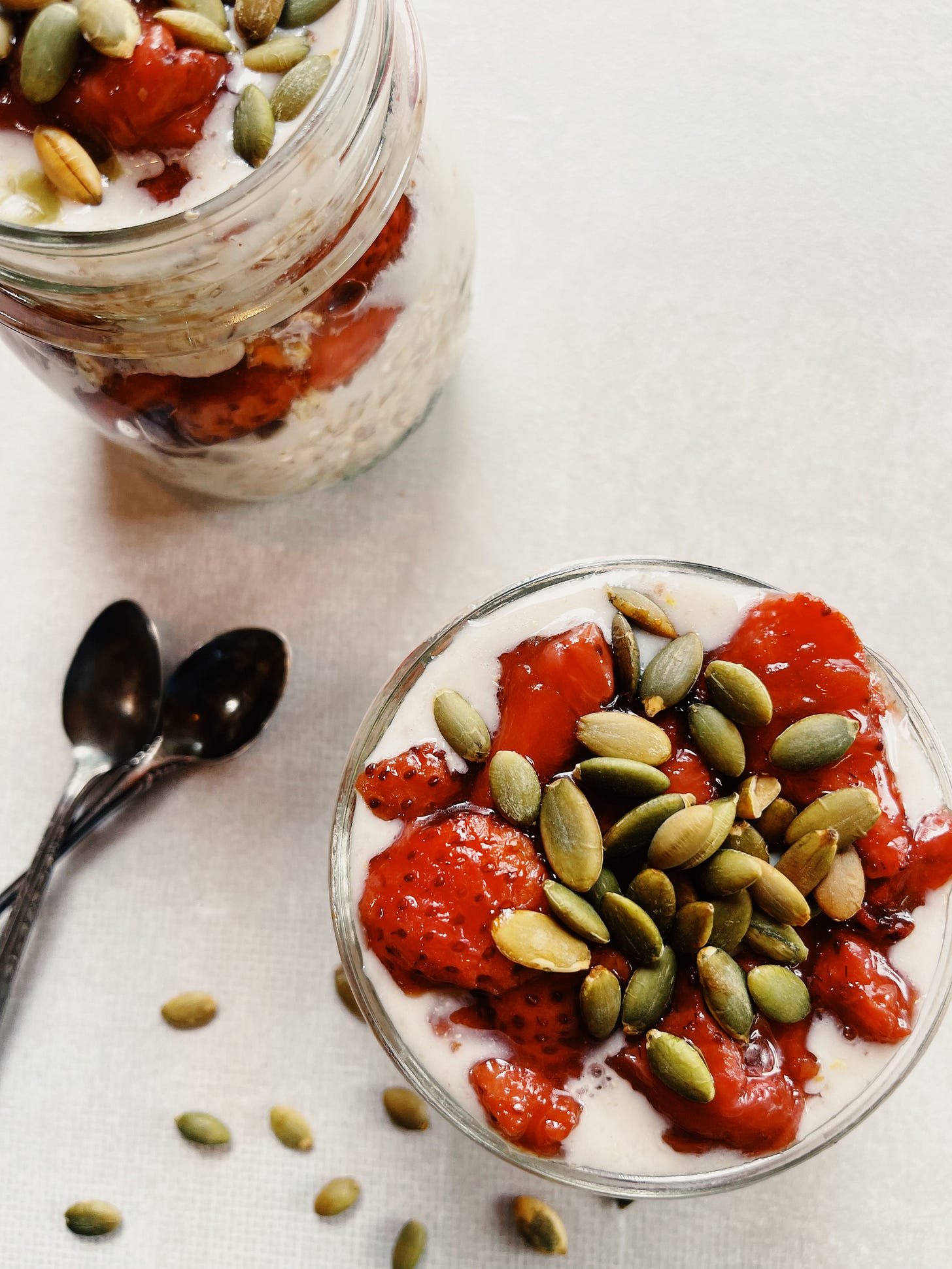Pay attention to your gut to boost brain health
Plus, a recipe for roasted strawberry overnight oats
No doubt you’ve heard about the gut microbiota, also known as the estimated 100 trillion microbes that reside in your gut. Feed the beneficial gut bugs the right foods and they give back in a myriad of ways. Not only can they make or break a healthy immune system, they help cultivate brain health, too.
I think of these pods of good gut bugs as tiny factories cranking out beneficial substances for the brain. They synthesize neurotransmitters, for example, for cell to cell communication, and short chain fatty acids that quell inflammation.
Navigating Gut Health Vocab
You may be wondering exactly what to eat to nurture this important aspect of your health. And, the terminology around this topic could use some explaining. Here’s how to navigate the gut vocab, with the foods that can help you enhance your gut health, and by extension, brain health, too.
Prebiotics
Technically speaking, prebiotics are foods (and other substances) consumed by a host’s (that’s you!) microorganisms (those are the bugs in your gut) that confer a health benefit on the host. Put simply: when you eat prebiotics, they benefit your health. Prebiotic foods are rich in the types of fermentable fiber good microorganisms need to thrive. This means eating a variety of whole plant foods that are inherently rich in this type of fiber.
My top picks for fiber-rich prebiotic foods: artichokes, asparagus, beans and lentils, Brussels sprouts, garlic, onions, and whole grains (like oats, farro, and black rice).
Perhaps the most potent prebiotic you can eat is in the form of resistant starch—a type of food that “resists” digestion until it gets to the lower part of the gastrointestinal tract, where the health-promoting bacteria reside. A baked sweet potato, for example, develops resistant starch when chilled overnight in the fridge. Other foods that develop resistant starch after being cooked and cooled (and consumed cold) include oats, beans, brown rice, and whole grain pasta. Hurray for leftovers! Soaking oats instead of cooking them can amp up resistant starch, too.
Find my recipe for Roasted Strawberry Overnight Oats below.




